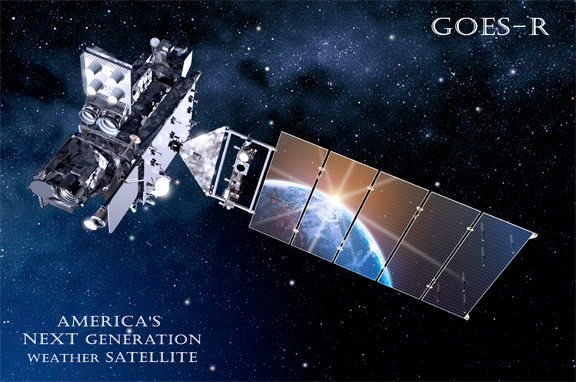...track severe weather across the United States, received a favorable appraisal conducted by an external team of aerospace experts of its preparations to launch the new series, beginning in late 2015. “Severe weather was again a major story in America this year,” said Mary Kicza, assistant administrator of NOAA’s Satellite and Information Service. “Passing this Mission Critical Design Review gives us confidence that the GOES-R Program’s development is progressing well and will be ready to carry the latest technology to help improve NOAA’s weather forecasts.”
At all times, NOAA operates two Geostationary Operational Environmental Satellites from a fixed position, 22,300 miles above the Earth. Additionally, NOAA keeps one GOES in orbital storage mode, ready to step in if one of the active satellites experiences trouble. NOAA’s geostationary satellites constantly monitor all weather conditions, from tornadoes, floods and snowstorms, to wildfires and developing tropical storms. In addition to their weather duties, GOES satellites also monitor solar activity, relay a wide variety of environmental data from earth-based observing systems, and detect emergency beacon signals from persons in distress.
NOAA’s GOES-13, which is the GOES East satellite, proved its mettle when Sandy threatened the Caribbean and the U.S., sending more than 1,200 images of the storm to NOAA forecasters, from October 20-31, as it approached—and then impacted—the Eastern seaboard.
NOAA manages the GOES-R Series Program through an integrated NOAA-NASA program office, staffed with personnel from NOAA and NASA, and co-located at NASA’s Goddard Space Flight Center in Greenbelt, Maryland. The GOES-R satellites are expected to more than double the clarity of today’s GOES imagery and provide more atmospheric observations than current capabilities with more frequent images. Data from the GOES-R instruments will be used to create many different products that will help NOAA meteorologists and other users monitor the atmosphere, land, ocean and the sun. GOES-R will also carry a new Geostationary Lightning Mapper that will provide for the first time a continuous surveillance of total lightning activity throughout the Americas and adjacent oceans.


